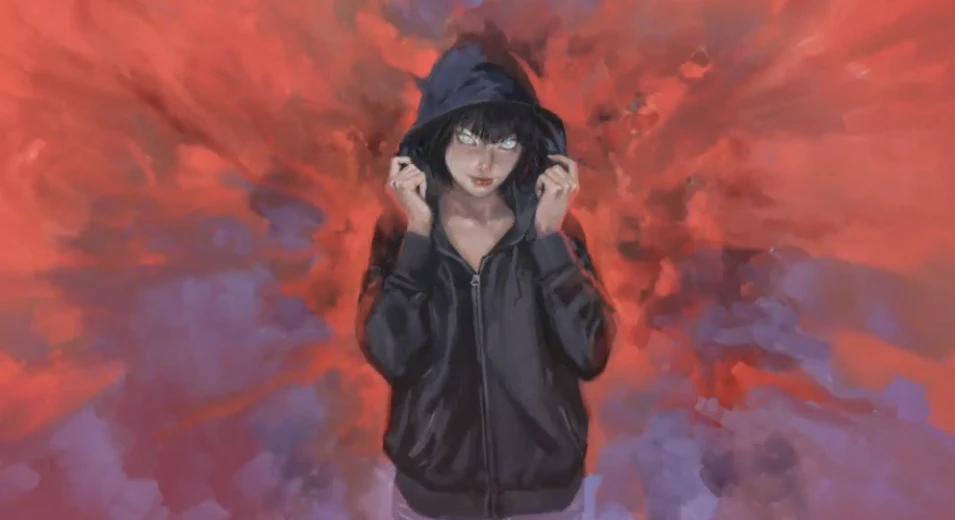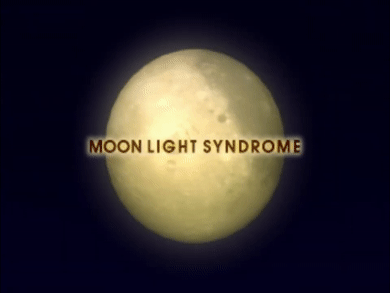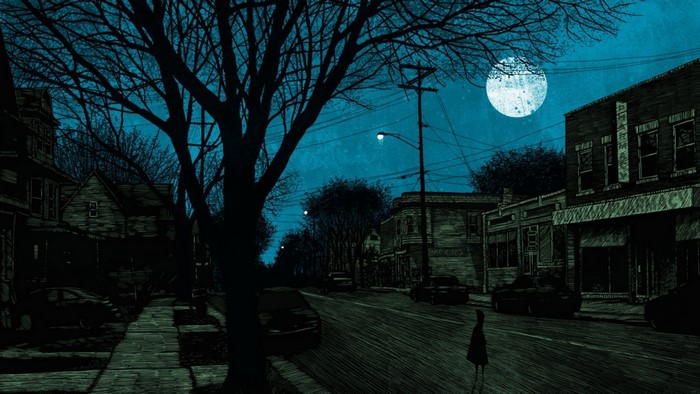
The moonlit road stretches all the way from a small town in Japan all the way to the Castle; at the end of our journey lies the past, where it began no one knows. Our very first stop through it, the town of Hinashiro, immediately faces us with a crossroad.
Twilight Syndrome:
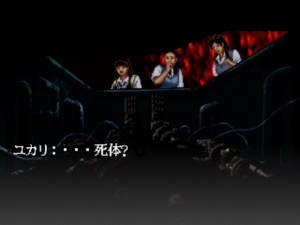
Twilight Syndrome (a game split in two halves, Search chapter and Investigation chapter) was the story of three girls and their town. Yukari Hasegawa, Mika Kishii and Chisato Itsushima, three very different and unlikely friends, investigate the ghostly apparitions around their hometown of Hinashiro as they delve into its hidden and at times monstrous past.
It was followed by Moonlight Syndrome, a game where all three girls eventually meet their end, the darkness of the town now seemingly insurmountable. Yukari and Chisato are killed while trying to return Mika to the world, and when Mithra, the god of contract who had imprisoned her, is finally slain by Ryo, his only reward is seeing her dead body.
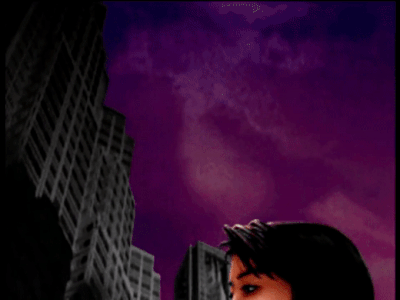
Though Moonlight Syndrome’s story would continue on into The Silver Case and eventually the rest of the Kill the Past series, Twilight Syndrome itself continued on in a different form, its rights acquired by Spike who kept the series alive with two new releases and three live action movies.
Twilight Syndrome went on to become an anthology series, each game following a different set of girls in a different location: However, the Spike games still went through the effort of making sure that Moonlight Syndrome was ignored entirely, ensuring the three girls’ survival.
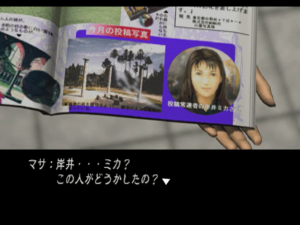
Our first hint of this crossroad actually comes from the bonus disc Twilight Syndrome: The Memorize, in which the recap of the two games is framed as the remembrance of Chisato Itsushima, now an adult.
Afterwards, in Twilight Syndrome: Reunion, the first of the two Spike-branded games, the main character Yuri Ando contacts a fellow occult photographer whom she finds out about through a magazine. Said girl turns out to be no other than Mika Kishii.
(In its sequel movie, Graduation, Yuri’s friends are called Mika and Chisato as well, but they’re actually different characters entirely.)
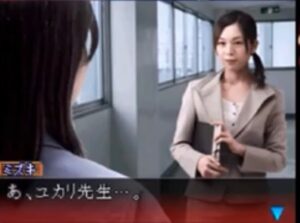
Lastly, in Twilight Syndrome: Forbidden Urban Legend, the final girl of the trio is “revived” with the appearance of Yukari Hasegawa as an adult teacher in Tokyo. It seems that while the three went their separate ways, Mika remaining an hobbyist and aficionado of the occult, Yukari moving to Tokyo and Chisato seemingly growing closer to her spiritual nature, they never had to face their gruesome deaths as depicted in Moonlight Syndrome.
In other words, while Moonlight Syndrome inherited the setting and character from Search and Investigation, it is ignored by the rest of the Twilight Syndrome franchise. Kill the Past and Twilight Syndrome were two separate series, with two separate canons, that just so happened to have the same origin point.
The Silver Case:
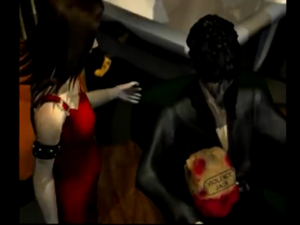
Moonlight Syndrome’s エピローグ EPILOGUE ends on a disturbing note: after the seemingly happy ending in which Ryo finally gets to embrace his loved one Mika, at the edge of the world, we are shown what is actually happening in reality: Rumi Tohba enters Ryo’s apartment and finds him sitting in front of the TV, unresponsive as if in a trance, holding his sister Kyoko’s severed head in his arms as he helplessly watches Mika Kishii’s image on the television screen.
This cliffhanger would go on to be ignored by the rebooted Twilight Syndrome series; however, it was eventually resolved in The Silver Case.
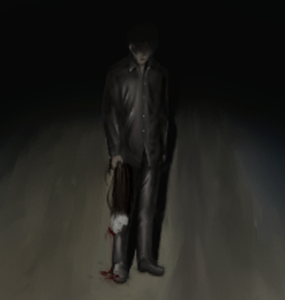
With context given to us by the backside of the soundtrack CD (seriously) we learn that the renovation of Hinashiro that we saw in Moonlight Syndrome was actually part of the 24th Ward, a urban development project meant to transform the district of Musashino into a 24th special ward of Tokyo with an independent governing system.
TSC opens on a case called Lunatics, which in itself refers to people whose mood is heavily afflicted by the changing phases of the moon; the word was also uttered in エピローグ EPILOGUE. A young man, holding a severed head, is chased to a secluded location after attacking a police officer.
Said young man is, in fact, Ryo Kazan. As he is chased through his hideout, the private railroad satellite “Cauliflower”, the officers come to find what seem to be his victims, various teenage girls who are either dead or injured.
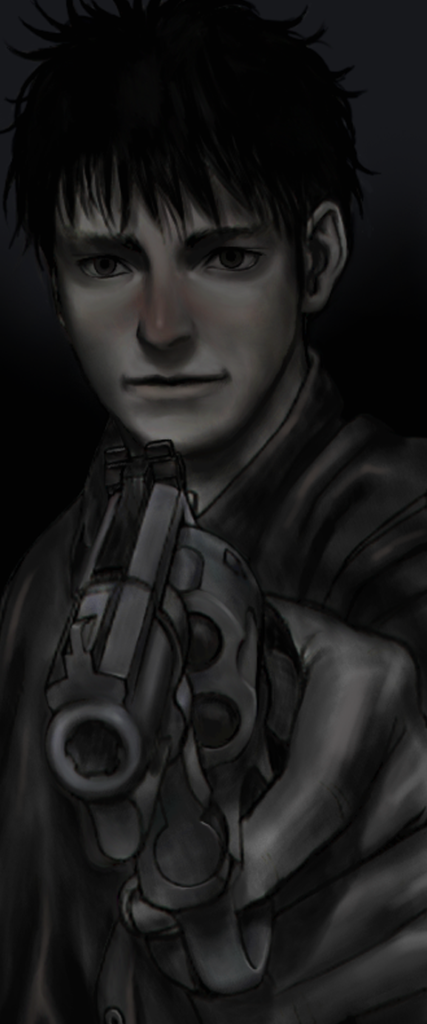
Once cornered on the roof, Ryo is executed by Tetsugoro Kusabi, the police officer he attacked earlier.
Rumi Tohba then shows up and threatens to attack the police officers for killing Ryo, now that they could finally be together. She then confesses to the murder of a woman who was standing between her and Ryo. This may refer to either Mika, or Kyoko Kazan herself.
Rumi Tohba is then gunned down by the main character of TSC, silencing her forever.
We know from Suda’s comments in the In-depth Guide Q&A that he regretted not having the time to fully conclude Rumi’s storyline:
Why isn’t Rumi at the “edge of the world”? That’s because I couldn’t take the time to write about her properly. The depiction of Rumi is something I wish I could’ve done more with.
Source.
We also know, from a 2016 Inverse interview, that he always intended for Ryo to be or at least turn into a psychopath who’d cut other people’s heads off, but his scenario was disrupted by state-mandated censorship related to the Kobe child murders:
WITH REGARDS TO THE CENSORSHIP THAT WAS PLACED ON MOONLIGHT SYNDROME, WHAT CHANGED WHEN IT CAME TIME TO MAKE SILVER CASE? HOW WERE YOU ABLE TO MORE FREELY EXPLORE THAT SUBJECT MATTER?
Source.
Well, The Silver Case is about chasing a serial killer, trying to catch him. But for Moonlight Syndrome, the main character is actually just a psychopath. And one of the main problems he was cutting people’s heads off, exactly what happened with the Sakakibara murders, so there were a lot of things that were just too close to real life. That’s why we weren’t able to make it the way they wanted to. We didn’t have that problem with Silver Case.
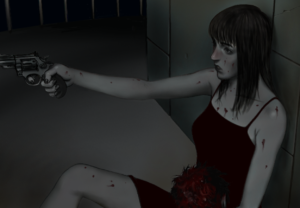
What I am getting at is that with the first chapter of The Silver Case, Suda tied up all loose ends from Moonlight Syndrome while actually realizing the scenario he originally intended.
Rumi does not appear at the edge of the world in エピローグ EPILOGUE, which is a sort of afterlife made out of a memory that becomes a place for people who came into contact with Mithra. She does, however, mysteriously appear there in 夢題 MOWDEI, implying she had some connection to the god after all.
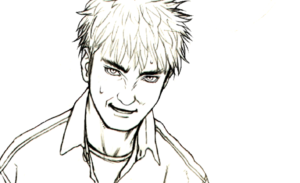
By having her claim responsibility for the death of Ryo’s “woman” who was standing between the two of them we can easily infer that Rumi herself was also under some sort of contract with Mithra, which led to the death of Kyoko or, most likely, Mika (whom she is shown to be jealous of in エピローグ EPILOGUE, asking Ryo if the two of them had gotten together), hence her initial appearance in the edge of the world and all the foreshadowing in 夢題 MOWDEI about her willingness to never let go of Ryo, no matter the cost, which did not pay off in the finished product.
Ryo’s role in Lunatics is slightly more complex: Again going back to the backside of the soundtrack CD (yes I know) Ryo is described as having inherited or being a manifestation of Kamui’s ghost.
The original Kamui MASPRO, which happened in 1980, saw the kidnapping of 1440 two year old boys. Meaning that Ryo (and Sumio) would have been the right age to be part of the original batch of Shelter Children.
While the project was deemed a failure due to being unable to achieve eye silverization, we learn through the course of TSC that Kamui can still manifest within the framework created by releasing the Shelter Children into society.
By paying attention to his dialogue, which only flashes on screen for a few seconds in a usage of time reminiscent of that we saw in Moonlight Syndrome, we can see that his real thoughts actually come through between the lines: He takes no responsibility for the murders, only wanted to protect Mika and doesn’t want to die. Almost as if he were being puppeteered by an outside agent (Kamui).
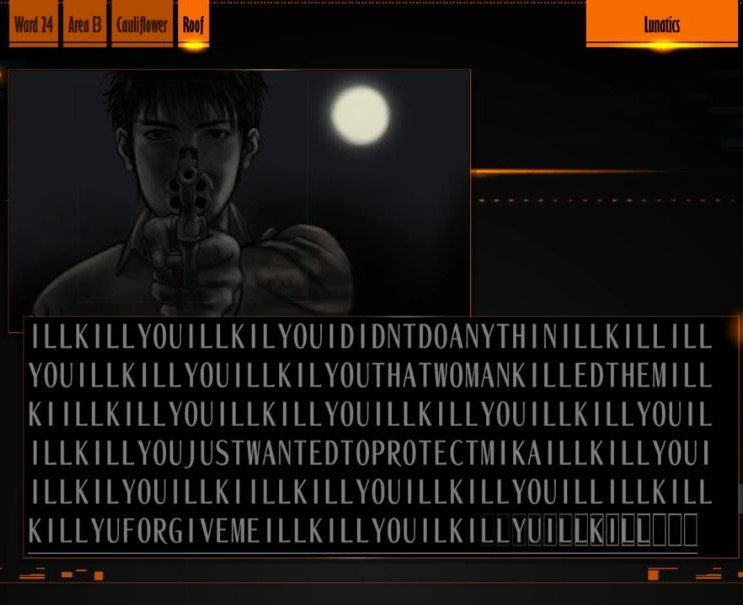
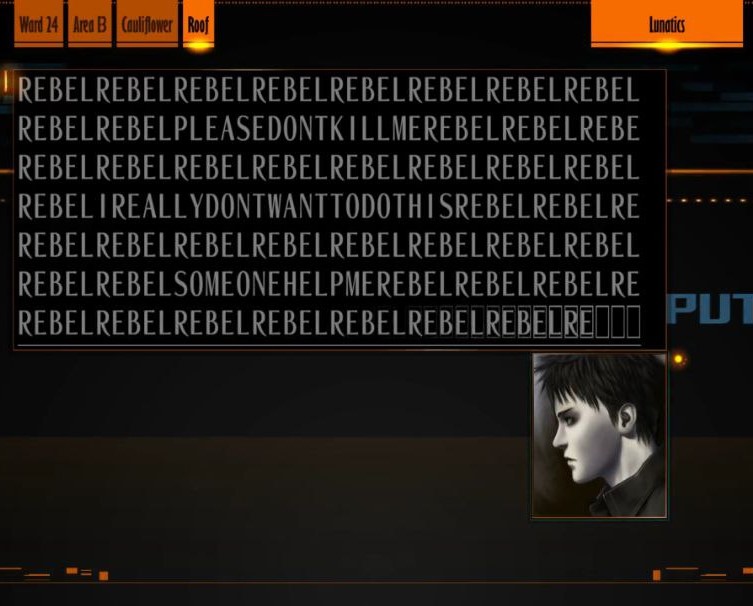
Regardless, this recontextualizes the events of Moonlight Syndrome in an interesting way: Yayoi does mention being interested in a certain kind of man in 夢題 MOWDEI; does that mean that what attracted her to Sumio and later to Ryo as being able to undertake the task of slaying Mithra was sensing the underlying presence of the Kamui killer instinct? Is that what gave Ryo the power to return to reality from the edge of the world in エピローグ EPILOGUE?
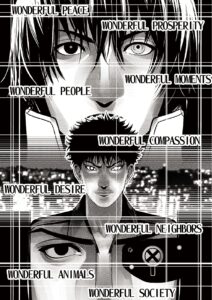
The PreLunatics prequel comic, released in 2016 to coincide with the new edition of The Silver Case, ultimately reveals that the conclusion of Moonlight Syndrome took place on the same night Lunatics is set in. The discrepancy is obvious: Moonlight Syndrome took place between May and October of 1997, while TSC begins in January of 1999.
By taking into consideration that when investigating “Cauliflower” it becomes evident that Ryo has been collecting victims for a long time, it does not seem far fetched that the epilogue we saw at the end of Moonlight Syndrome happened fifteen months after the end of the game. Ryo, or at least what remained of him after his longing for Mika led his spirit to the edge of the world, has been replicating the trauma of seeing his loved ones decapitated by killing young girls who look similar to his sister Kyoko and Mika for the past year and a half, until Rumi finally finds out by happening to find him in a fugue state. It’s also not unreasonable to believe that the two had entered a romantic relationship at that point, which would explain Rumi’s comment about finally being able to be together.
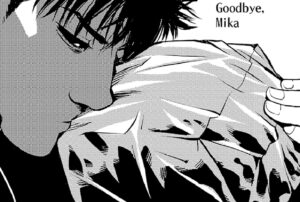
Another detail that’s important is that that the head in Ryo’s lap at the end of Moonlight Syndrome was implyed to be that of his sister, with the Violence Jack label on the paper bag. However, in the comic, he recognizes the head as Mika.
My best guess would be that, since the scene we see takes place so long after the events of MS, it’s neither of them. Ryo just sees the heads he collects as “substitutes” for Kyoko and Mika, who in his mind are also one and the same.
Lastly, the Silver Case timeline mentions that Nakategawa was investigating what had come to be known as the moon murders, the killings of high-school girls that occurred at the hands of the headmaster. However, Nakategawa is also killed through the course of the game.
By the end of TSC, every single character who was directly involved with or had any knowledge of the events of Moonlight Syndrome has died, forever shrouding them in mystery, except for the one who initiated the tragedy: Yayoi Itsushima.
Flower, Sun and Rain:
The last survivor of the moon murders, Yayoi Itsushima, actually shows up in Flower, Sun and Rain under the alias of Yayoi Hanayama.
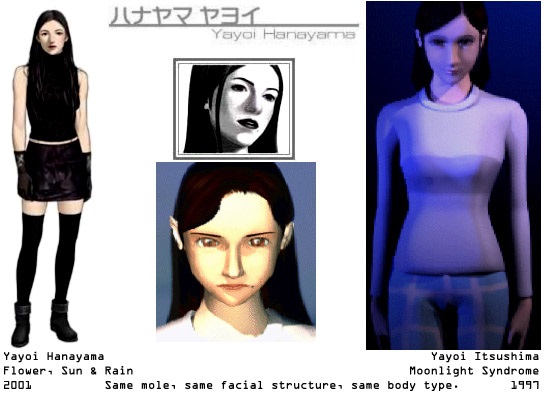

Unfortunately, Yayoi doesn’t address any of the events of Moonlight Syndrome. Sumio Mondo, the main character from FSR, isn’t connected to the case at all, even if he were to know that she was the only survivor, which of course nobody does. The federal special agent Koshimizu Yoshimitsu happens to be Nakategawa’s apprentice, and Nakategawa was in charge of investigating the moon murders; however, Koshimizu and Yayoi never cross paths on Lospass Island.
Yayoi herself has no reason to address such events; she has moved on with her life and is merely taking a vacation at the Flower, Sun, and Rain hotel. However, we can infer a few things from her presence alone:
For once, it’s almost dramatic irony to see her flirt with another man named Sumio, but have her attentions rejected for he is too infatuated with a different woman. (In this case it would be Sumio’s briefcase Catherine.)
However, through the course of the story, it is revealed that Sumio Mondo was part of the Euro MASPRO, situated in Lospass itself. Which means that he too has the potential to channel the being known as Kamui.
I have previously theorized that she might have approached Ryo and Sumio (Tohba) specifically because they might have been a part of the original Kamui MASPRO; it is also possible however that, as a supernatural being, Yayoi is just attracted by this specific kind of man, much like an Ayame would.
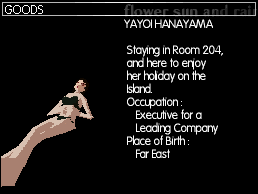
Secondly, her bio from the Official Fanbook (which was later translated and included as part of the Nintendo DS remake) reveals that she’s actually an executive for a leading company; as we find out through the course of the game, Lospass Island itself is a hub of operations for ELBOW, a globalist consortium of advanced nations. Edo Macalister, the hotel manager, is himself a high ranking ELBOW employee, and Daizaburo Kai, the head of the TRO/CCO alliance, also vacations on the island. What I’m getting at is that it’s not unreasonable to think that Yayoi would be involved with the organization; she is coded as being comfortable with urbanized modernity in Moonlight Syndrome (as opposed to her traditionalist sister Chisato Itsushima), and as we know from TSC, ELBOW was directly responsible for the renovation of the 24th ward by financing its three leading syndicates, TRO, CCO and FSO, in order to advance their research. Her cold and manipulating nature would fit in perfectly with the corporate hierarchy, and the stage that ELBOW is setting for the world seems to suit her just fine.
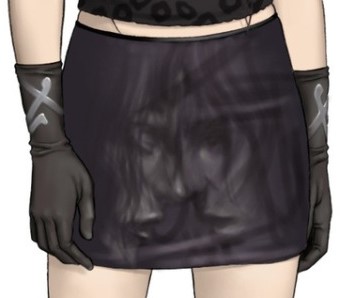
Another interesting factoid is that Yayoi’s surname in Flower, Sun and Rain, Hanayama, is actually a play on the Kazan surname. 華山 is read as “Kazan” in MS, and is the family name of Ryo and Kyoko. But the individual kanji 華 translates as “flower” (HANA) while 山 translates as “mountain” (YAMA).
ハナヤマ is Yayoi’s surname in FSR. Which is the katakana spelling for “Hanayama”.
I have two interpretations for this: It could be just a cold inside joke on her part, implicitly confessing to having led the Kazan siblings to their death. The opposite could also be true: as we know from エピローグ EPILOGUE, a part of Yayoi did long for Ryo’s affection, and he is, ultimately, the one whom she should be grateful to for freeing her from Mithra. As their love was not meant to be, Yayoi’s alias might be a way of keeping Ryo’s memory alive. While she suppresses and hides her romantic nature, her skirt does depict two lovers, close to kissing one another but forever separated.
Killer7:
The story of killer7 actually takes place in an alternate timeline compared to the rest of the Kill the Past series; while their histories and technological development are not compatible, the world of killer7 is still directly informed by its mythology and themes. As such, it indirectly answers some lingering questions from Moonlight Syndrome, while also featuring a cameo from one of its characters.
Through the course of the game, Garcian Smith uses the television medium to interface with the personae of the Smith Syndicate, who are of course all dead. The imagery for this is already reminiscent of that found at the end of Moonlight Syndrome’s エピローグ EPILOGUE, with Ryo’s empty stare being fixated on the image of Mika Kishii being projected onto the television.
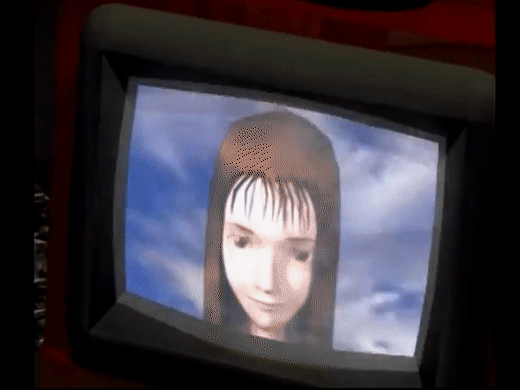
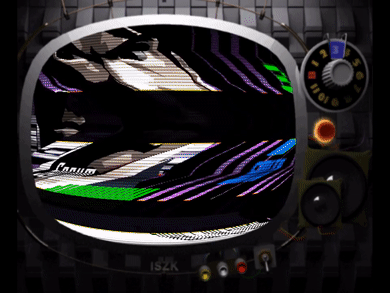

However, the game goes one step further: Whenever one of the personae is killed, an animation plays that implies their body has been blown to pieces by a Heaven Smile, with only their heads remaining.
When Garcian, the core persona, goes on to retrieve said heads, he finds them in a paper bag very much reminiscent of that which held the head of Kyoko in Moonlight Syndrome.
In order to resurrect the fallen persona, Garcian has to take their severed head back to the television screen, where it will be revived, their visage being shown on it once more.
|
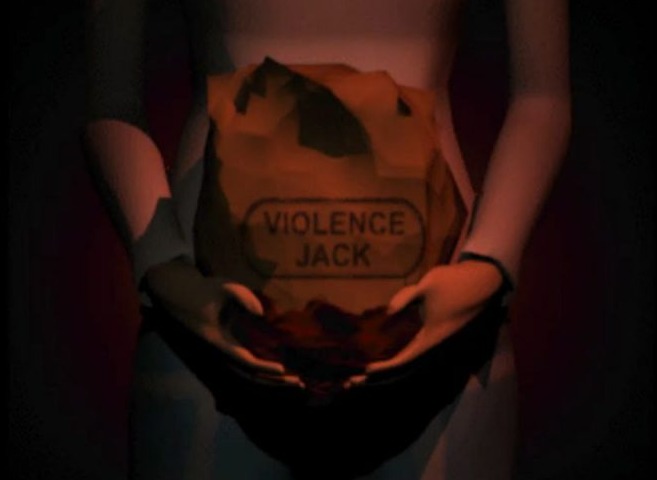
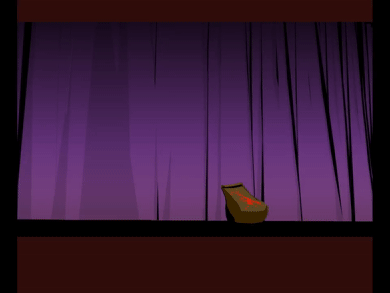
Through the course of killer7 it is eventually revealed that the persona of Garcian Smith was actually hiding the deeper identity of Emir Parkreiner, an entity which you might describe as a north american Kamui Uehara, if not the same exact being referred to with a different name. (Both “Kamui” and “Parkreiner” are names taken from random civilians.)
What I’m getting at is that Garcian (Parkreiner) and Ryo (Kamui) were drinking at the same wellspring of madness. Is it possible that, by collecting the heads of high-school girls, Ryo was attempting a resurrection ritual to bring back Mika, Kyoko, or anyone who could fulfill that role for him?
This point is exacerbated by the fact that, much like Ryo, the Smith Syndicate is eventually visited by Mithra, the god of contract.
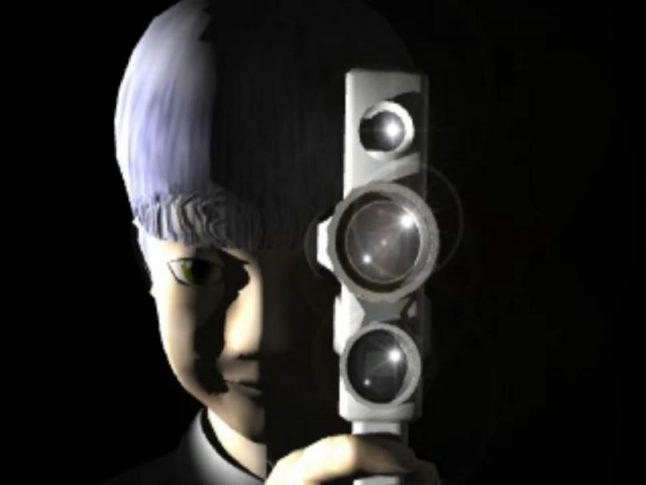
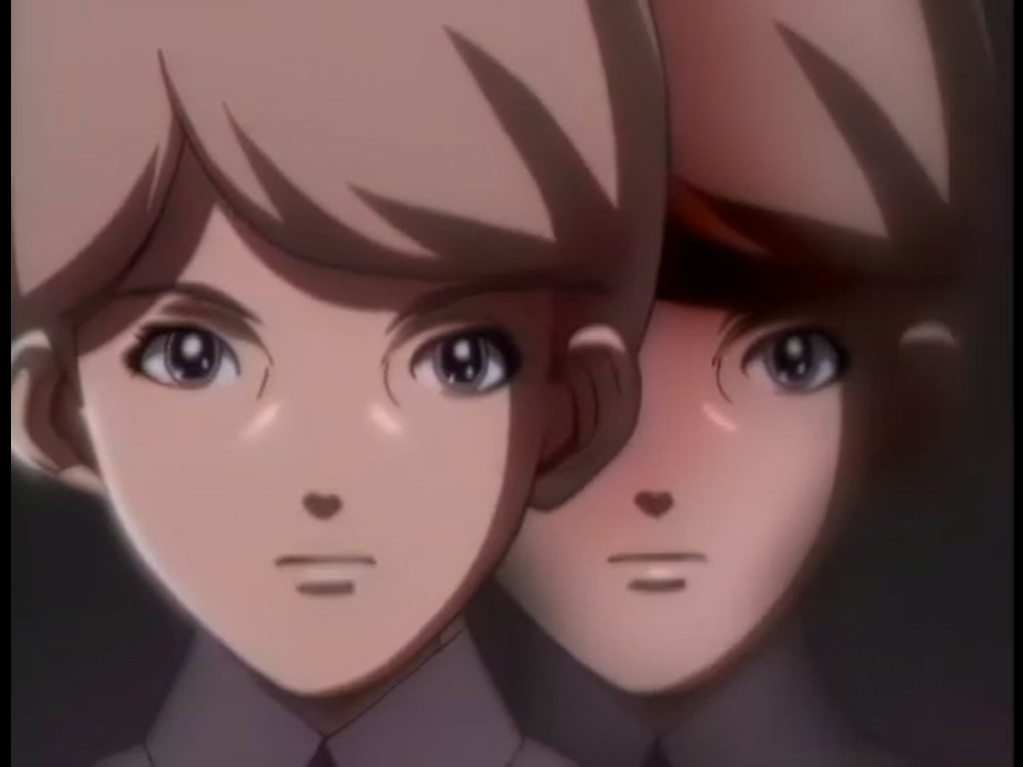
Mithra appears as a set of twins and speaks in the voice of an old man, implying that the cultist first met by Mika in Moonlight Syndrome’s プロローグ PROLOGUE was in fact the other half of the white haired boy that tormented her through the game. Moreover, the Hand in killer7 handbook confirms that the “Oracle” is Mithra and gives us some more information about him:
ORACLE
Source.
“You shall be keen, traveler.”
(1) The twins are 108 years old.
(2) In accordance with prophecy, they appeared in the image of two boys.
(3) The twins represent opposites: day and night, past and future, heavenly light and diabolical darkness.
(4) They are Mithra, the god of contract.
The 25th Ward:
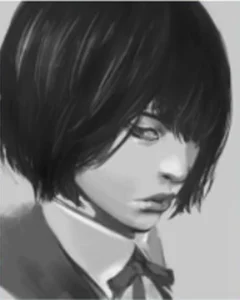
The final chapter of the Placebo arc, YUKI, is set in the town of Hinashiro.
The titular Yuki Shimohira seems to lead the life of a normal high-school student in 2017 Hinashiro. Unfortunately it seems that 20 years since we last saw it, despite looking completely different, the town still retains its haunted nature.
Yuki, much like the main characters of Twilight and Moonlight Syndrome, has a penchant for the supernatural: She can sense and interact with lingering consciousnesses on a level that is unknown to her peers, her last name even indicating that she is somehow connected to the MASPRO projects, possibly a relative of Ayame or Shiroyabu.
Through the tutoring of Hiiragi and eventually of Tokio Morishima, Yuki awakens to her powers and manages to solve the haunting at the train station, inheriting the role of supernatural investigator that the three girls who died before she was even born held before her: Yukari, Mika and Chisato.
